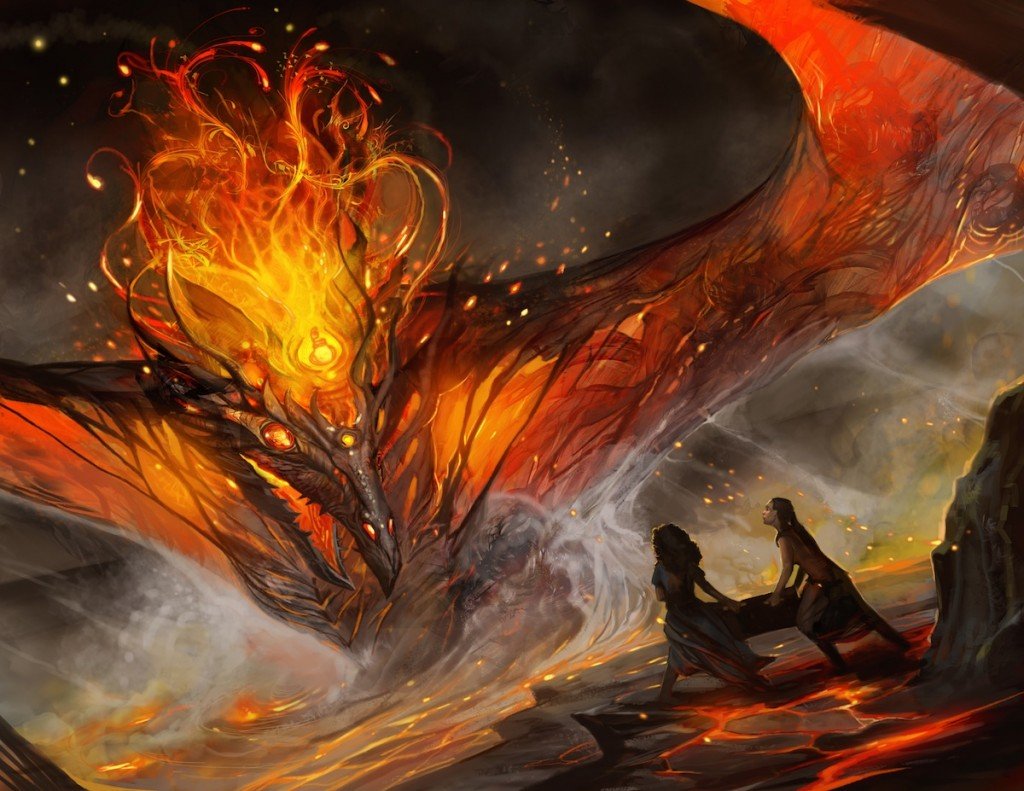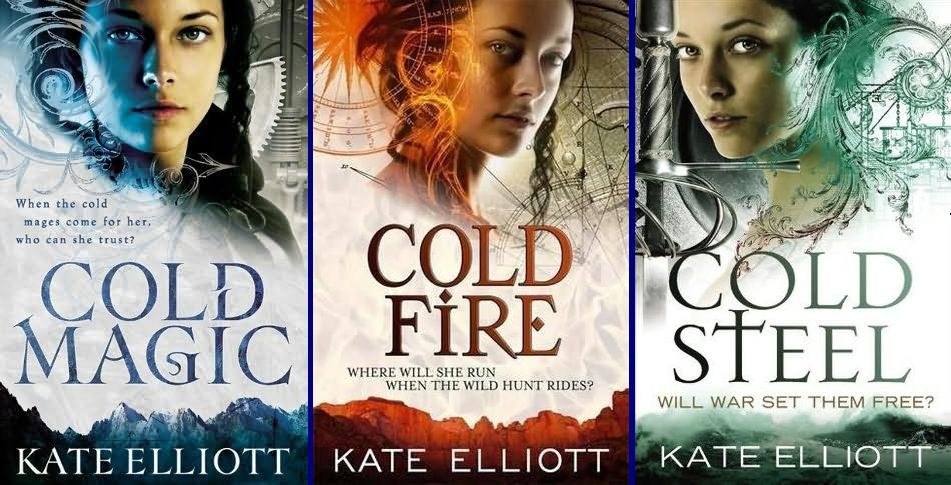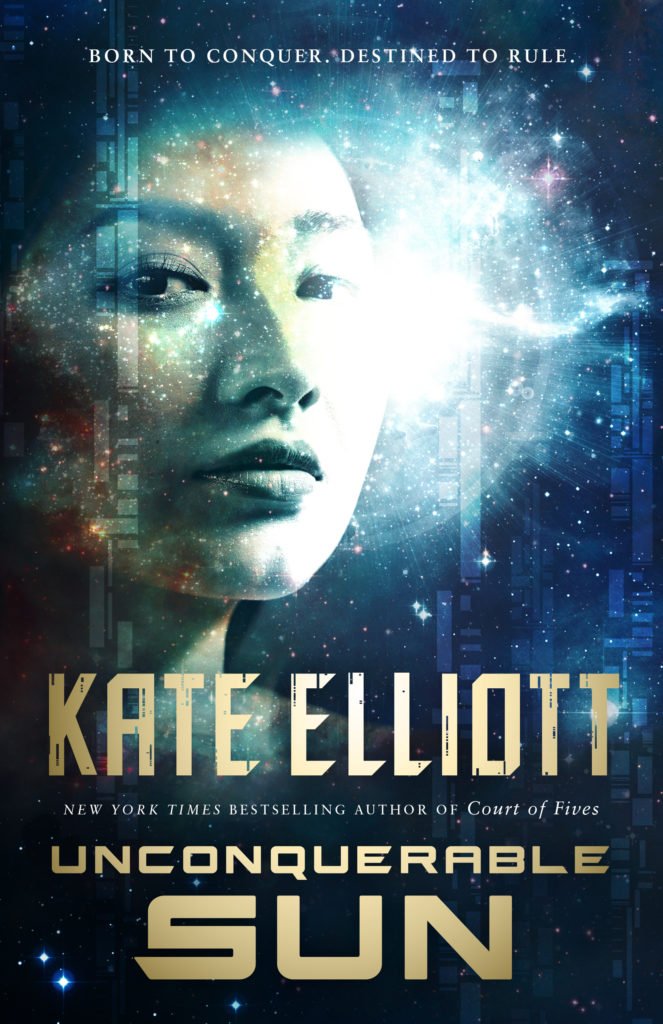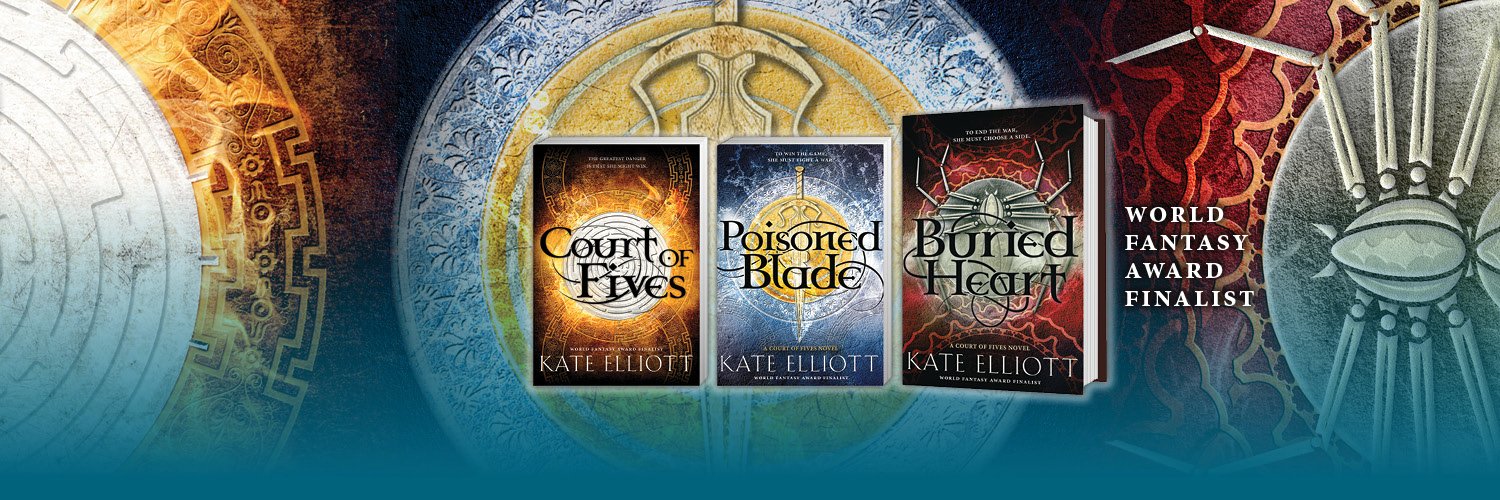I will always be grateful to the enthusiastic and devoted readers who have championed my Afro-Celtic post-Roman icepunk regency adventure alternate-history fantasy, with magic both cold and fire, revolution, Phoenician spies, well-dressed men and hungry women, female friendship, a spirit world dangerously intertwined with the mortal world, sword fights and battles and ball games, world trees, the talking heads of decapitated poets, legal niceties, and therefore of course lawyer dinosaurs. Where would we be without lawyer dinosaurs, I ask you?

The Spiritwalker Trilogy:

Short Fiction
Bloom is a novelette set in the Spiritwalker universe about eight years before COLD MAGIC. While a few familiar characters appear, it is actually about an entirely different character’s journey through grief. A quiet story that I really love, it is available in THE BOOK OF MAGIC, edited by Gardner Dozois.
A Compendium of Architecture and the Science of Building is a short story set about a year after Bloom and takes place at Four Moons House. The elderly uncle of the mansa who has come home to retire after many years working abroad as architect, but things don’t work out quite as he expects. It appears (free!) in Lightspeed Magazine (includes an audio version).
The Beatriceid is Bee’s retelling in verse of the story of Dido and Aeneas, obviously the more correct version. Set during Cat and Bee’s school days at the Academy, the events take place before COLD MAGIC and as such can be read at any moment, especially if you enjoy the AENEID or like to take the piss out of the Romans, as I do. My apologies because at the moment there is no version of it online. It was originally published by Book Smugglers Publishing. As soon as there is an online version I’ll link here.
To Be A Man (A Roderic Barr Adventure) takes place at the same time as the final chapter of COLD MAGIC. This story has no redeeming social value whatsoever. You’ve been warned. You can read it on this website for free. An audio version is available for purchase (a mere $0.99) at Serial Box.
A print version appears in the collection THE VERY BEST OF KATE ELLIOTT (Tachyon Publications).
Cold Fire Bonus Chapter 31.5 (to be read after chapter 31 of Cold Fire, natch). XXX rated. No, really. I wrote it because N.K. Jemisin made me. If you, dear Reader, do not care for smut (and no reason anyone should), then it is perfectly fine to skip this chapter; the trilogy works fine without it. If you do like smut, here you go.
The Courtship is a coda novelette, to be read after the end of Cold Steel. It wraps up a couple of loose ends (but not all of them). It is available on this website HERE (contains adult situations and nudity).
The Secret Journal of Beatrice Hassi Barahal (with 28 fabulous black and white illustrations by Hugo Award winning artist Julie Dillon) is available at Gumroad as a pdf for $3.50. Discover Bee’s side of the story, with pictures from her sketchbook!
“I Am A Handsome Man,” Said Apollo Crow takes place after the Spiritwalker Trilogy and features an unusual denizen of the spirit world. It is available in THE BOOK OF SWORDS, edited by Gardner Dozois.
A Lesson To You Young Ones is a very short story featuring Maester Godwik, one of my favorite lawyer dinosaurs, and the lesson he teaches a classroom full of young pupils. It is available on this website.
When I Grow Up might best be described as the coda to the coda. Currently available on the mighty Book Smugglers site.
In addition, I have four partially written but as yet unfinished Spiritwalker stories I hope to complete, after which I would like to put together an illustrated Spiritwalker short fiction edition. In truth, I had hoped to create and complete that project for the 10th Anniversary of the publication of COLD MAGIC but life intervened and I didn’t have the energy, so a Spiritwalker collection remains a future goal.





